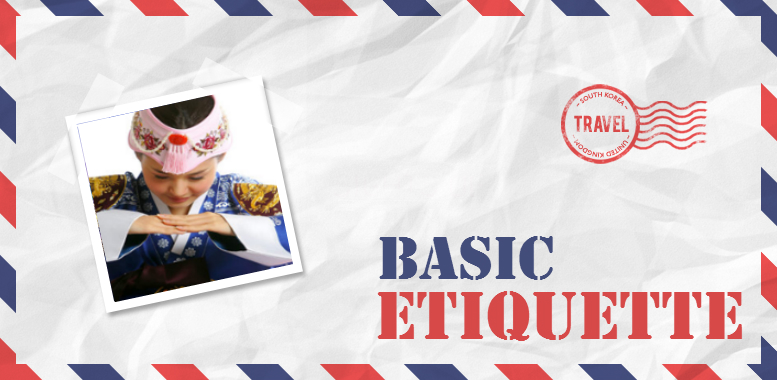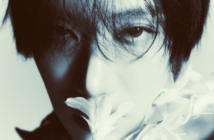Hi all! In this weeks Travel Thursday feature I’ll be talking to you a bit about basic Korean etiquette. If you’ve watched enough K-Dramas or Variety shows, I’m sure you’ve picked up a great deal on your own, but I will be laying out a few of the things I learned through experience and failures while in Seoul! Let’s get going!
First things first… eating out in Korea, basically means there will be chopsticks. Unless you’re going to a fancy foreign restaurant, most places give you sticks to eat with, and a spoon for soup or, if you like, to scoop your rice with. Personally, I’ve always loved eating with chopsticks, and taught myself how at the age of 10, but my friend who came with me to Seoul was not as familiar with the procedure. It takes a bit of practice, but trust me: It’s all well worth it. Koreans are often super impressed, and it saves you the effort and embarrassment of asking for a fork wherever you go.
Another thing to remember while eating – don’t put your sticks down across your bowl, or stick them in the food. If you need to put them down, leave them on the side of the table, or if you have one, put them on the chopstick holder next to your plate. In Korea it is considered rude to leave them in the food.
Finally, at the end of your meal, don’t tip. In Korea it is considered rude to tip, and gives the idea that you pity them or see yourself as above your waiter. A service fee will usually be included in the meal, and it gives you one less thing to worry about when paying for your food!
Next, mind your hands. It is considered rude to point or wave at someone. If you want to call someone over, make sure you do so palm down, and waving your hand back and forth, kind of like a dog paddling gesture. This also goes for when you’re eating, make sure you don’t wave your chopsticks at someone, rather put them down and then proceed to make gestures.
Another thing – which I’m sure you will have seen a lot of in dramas and variety shows, it’s polite to accept and give using both hands. Traditionally, this depends on stature and is based on a hierarchy, but to be safe just make a habit of this. When accepting something, or say, handing over money to a cashier, either use both hands, or support your right hand with your left. Keeping your left hand at either your wrist, or under your elbow.
When you are on public transport, like the tube or a bus, always stand up for the elderly. When we first went to Korea, we were terrified of seeming rude, and ended up always standing – even if there were available seats. But, when you go on long trips or have a lot of bags, it can be rather tiring, so just make sure to always vacate your seat if an elderly or otherwise disabled or pregnant women come on.
There are some rumours that elderly in Korea don’t like foreigners much, but myself I’ve only had really nice experiences. The first time I was there, an old man tapped my shoulder and started talking with me and my friends. Him and his group of elderly were curious about us, where we were from, and how we were enjoying Korea. Before they went off, they even gave us home made tofu as a present! Super sweet.
When it comes to your clothes, Korea is quite free and you won’t be beheaded for showing a bit of skin. However, do keep in mind that while short skirts and dresses are entirely acceptable, you might be frowned at if you’re showing too much cleavage. Out of respect for the culture and the elders who might not be as used to our western ways, try to cover your shoulders and cleavage with a light jacket or even just a sleeved shirt.
I made the mistake of taking the tube before going clubbing in Gangnam once, wearing a normal playsuit, but not thinking about the rather ample cleavage it gave me. Needless to say I covered myself up in my sisters huge scarf before having walked as far as 10 steps out on the street.
In western cultures, we don’t mind a bit of “skinship” among friends. A hug when we see each other, a slap on the shoulder or a kiss on the cheek every now and then. Keep in mind, this is very different in Korean culture. Personally, I love hugs, and this is a problem for me with my Korean friends. Hugging in public is not usual, and often makes things very awkward – especially if it’s the opposite sex. In my experience, going in for a hug will catch them by surprise no matter how many times you do so, and the entire experience becomes strange.
A slap on the back or putting your hand on someone’s shoulder might actually be seen as rude as well. If you are not close, and you’re not entirely sure how they’ll react, it might be better to stick with a smile and leave it.
If you are lucky enough to be invited into a Korean home, make sure to take off your shoes before entering. Often they will have a small section right inside the door, before you step onto the floor, where you are expected to take your shoes off. Look at your host, and see how they do it, then do the same.
Finally, bowing. In Korea, bowing is a huge part of their culture, and it signifies respect and honour. When you meet someone, or when someone greets you, bow your head and shoulders slightly. There are plenty of tutorials on how to do this correctly on youtube etc, but check out this neat one from Seoulistic here:
<iframe width=”560″ height=”315″ src=”//www.youtube.com/embed/jJLrEzpzpYA” frameborder=”0″ allowfullscreen>





